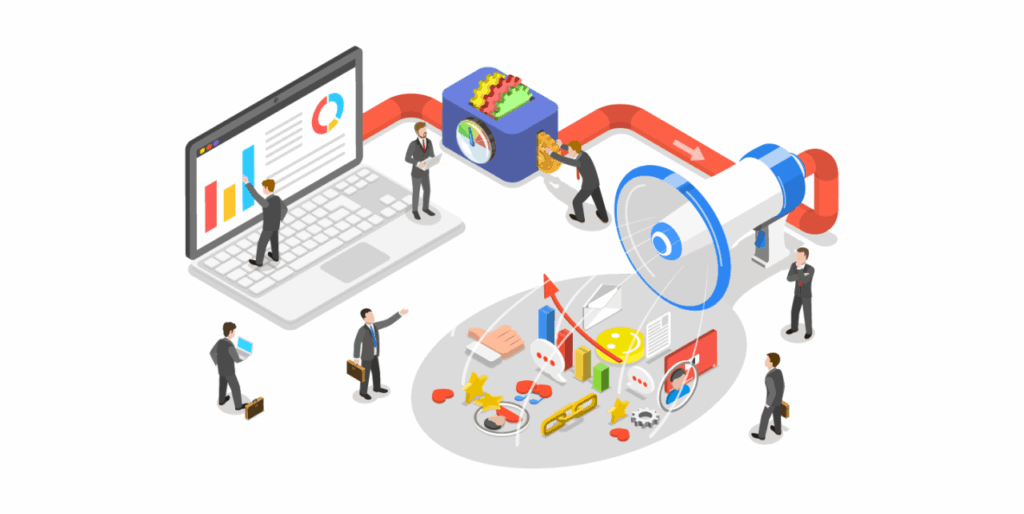In the digital marketing landscape, staying ahead of your competitors often requires leveraging advanced advertising methods. One such method that has revolutionized marketing is programmatic advertising. Whether you’re a small business owner, digital marketer, or part of an agency, understanding what programmatic ads are and how to use them effectively can significantly boost your marketing success.
In this article, we’ll explore everything about programmatic ads, their types, examples, platforms, and 7 powerful strategies to enhance your campaigns.
Introduction to Programmatic Ads

Table of Contents
Programmatic ads refer to the automated buying and selling of digital advertising space using software and data insights. Unlike traditional ad buying, which involves manual negotiations and orders, programmatic advertising relies on algorithms and real-time data to deliver ads to the right audience at the right time.
Why Programmatic Ads Matter
- Efficiency: Automation reduces time spent on manual ad placements.
- Precision Targeting: Ads reach specific audiences based on demographics, behaviors, and interests.
- Better ROI: Optimized ad placements lead to higher conversions.
For small business owners and agencies, programmatic ads are a cost-effective way to scale campaigns without wasting budget on irrelevant traffic.
How Programmatic Ads Work
Programmatic advertising works through real-time bidding (RTB) or direct programmatic deals. Here’s a step-by-step breakdown:
- Ad Request: A user visits a website or app.
- Auction Initiation: The ad impression goes to an ad exchange.
- Bid Submission: Advertisers bid for the impression based on user data.
- Winner Selection: The highest bidder’s ad is instantly displayed.
- Ad Delivery: The ad is shown to the user, and the system tracks performance.
Examples of Programmatic Ads
- Display ads on news websites.
- Video ads on YouTube or OTT platforms.
- Social media ads using automated platforms.
This process ensures advertisers reach the right audience at the right time while minimizing human error.
Types of Programmatic Advertising
Programmatic advertising can be divided into four main types:
1. Real-Time Bidding (RTB)
- Description: Auction-based ad buying where advertisers bid in real-time.
- Pros: Cost-effective, flexible, scalable.
- Cons: Highly competitive, requires continuous monitoring.
2. Programmatic Direct
- Description: Advertisers buy specific inventory directly from publishers at a fixed price.
- Pros: Guaranteed placements, better quality inventory.
- Cons: Less flexible, higher cost.
3. Private Marketplace Deals
- Description: Exclusive programmatic deals between select advertisers and publishers.
- Pros: Premium inventory, better audience targeting.
- Cons: Limited access, higher costs.
4. Preferred Deals
- Description: Fixed-price deals where advertisers get priority over RTB participants.
- Pros: Predictable pricing, first-choice inventory.
- Cons: Less competitive advantage than private marketplaces.
Programmatic Advertising Platforms

Selecting the right platform is crucial for success. Here are some popular options:
| Platform | Features | Ideal For |
|---|---|---|
| Google Display Network | Wide reach, RTB & targeting | Small businesses & agencies |
| The Trade Desk | Advanced analytics, multi-channel | Large campaigns, data-driven marketers |
| MediaMath | AI-powered bidding, audience segmentation | Agencies & enterprises |
| AdRoll | Retargeting, e-commerce focus | Online retailers |
| Xandr | Premium inventory, multi-screen | Large brands & publishers |
Using these platforms allows marketers to automate campaigns efficiently and gain better insights into audience behavior.
Where Programmatic Ads Show
Programmatic ads appear across multiple digital channels, including:
- Display Networks: Websites, blogs, news portals.
- Social Media: Facebook, Instagram, LinkedIn.
- Mobile Apps: In-app advertising for targeted audiences.
- Video Platforms: YouTube, OTT streaming services.
Benefits of Multi-Channel Exposure
- Wider audience reach.
- Increased brand visibility.
- Higher conversion potential due to consistent exposure.
| Channel | Ad Type | Advantage |
|---|---|---|
| Display | Banner, sidebar | Visual engagement |
| Social | Sponsored posts, stories | Targeted demographics |
| Mobile | In-app banners | User-specific targeting |
| Video | Pre-roll, mid-roll | Engaging storytelling |
7 Powerful Strategies to Boost Your Marketing Success with Programmatic Ads
1. Audience Segmentation
Segment your audience based on demographics, behaviors, and purchase intent. The more precise your targeting, the higher the ROI.
2. Retargeting Campaigns
Engage users who have interacted with your website but didn’t convert. Retargeting increases the likelihood of completing sales.
3. Dynamic Creative Optimization (DCO)
Use automated tools to deliver personalized ad creatives for different users, boosting engagement rates.
4. Multi-Channel Integration
Run campaigns across multiple platforms simultaneously. Integrated campaigns increase brand recall and conversions.
5. A/B Testing for Ads
Continuously test ad creatives, placements, and bidding strategies to determine the most effective approach.
6. Data-Driven Bidding
Leverage AI and analytics to optimize bids in real-time, ensuring maximum efficiency and lower costs per conversion.
7. Continuous Performance Analysis
Regularly monitor KPIs like CTR, conversion rates, and CPA. Adjust strategies based on performance insights for sustained growth.
Benefits of Using Programmatic Ads
- Time-Saving Automation: Reduces manual ad buying efforts.
- Precision Targeting: Reach the right audience at the right time.
- Cost Efficiency: Bid only for valuable impressions.
- Higher ROI: Optimized campaigns yield better results.
- Scalability: Easily expand campaigns across channels and geographies.
These benefits make programmatic advertising indispensable for small businesses and agencies seeking measurable growth.
Challenges of Programmatic Advertising
While programmatic ads offer numerous advantages, marketers must be aware of potential challenges:
- Ad Fraud: Bots or fake clicks can waste budget.
- Transparency Issues: Difficulty in knowing where ads are displayed.
- Technical Complexity: Requires knowledge of platforms and data analytics.
How to Overcome These Challenges
- Use verified ad exchanges.
- Monitor campaigns regularly.
- Invest in training or hire programmatic experts.
FAQs
Q1: What is an example of programmatic advertising?
An example is a banner ad displayed on a news website through a real-time bidding platform. The ad is automatically targeted based on the user’s behavior and interests.
Q2: Is Facebook ads programmatic?
Yes, Facebook ads use programmatic technology for automated targeting, bidding, and delivery. Advertisers can optimize campaigns in real-time based on audience data.
Q3: What are the 4 types of programmatic deals?
The four types are Real-Time Bidding (RTB), Programmatic Direct, Private Marketplace Deals, and Preferred Deals. Each offers different levels of control, pricing, and audience access.
Q4: Where do programmatic ads show?
Programmatic ads appear across display networks, social media platforms, mobile apps, and video streaming services like YouTube and OTT platforms.
Q5: What are programmatic ads in marketing?
Programmatic ads are automated digital ads that use software and data to target audiences effectively. They improve efficiency, targeting precision, and overall ROI for marketing campaigns.
Check out our related article on the most looked-up thing on Google to understand trending searches that can inform your programmatic targeting strategies.
Conclusion
Programmatic advertising has transformed how businesses reach their audience in the digital world. With automation, precise targeting, and data-driven insights, small businesses, agencies, and marketers can maximize their ROI and improve campaign efficiency. By implementing the 7 powerful strategies outlined above, you can take your programmatic campaigns to the next level and stay ahead in the competitive marketing landscape.
Invest in the right platforms, continuously analyze performance, and adapt to audience behavior, and programmatic advertising will become a cornerstone of your marketing success.

